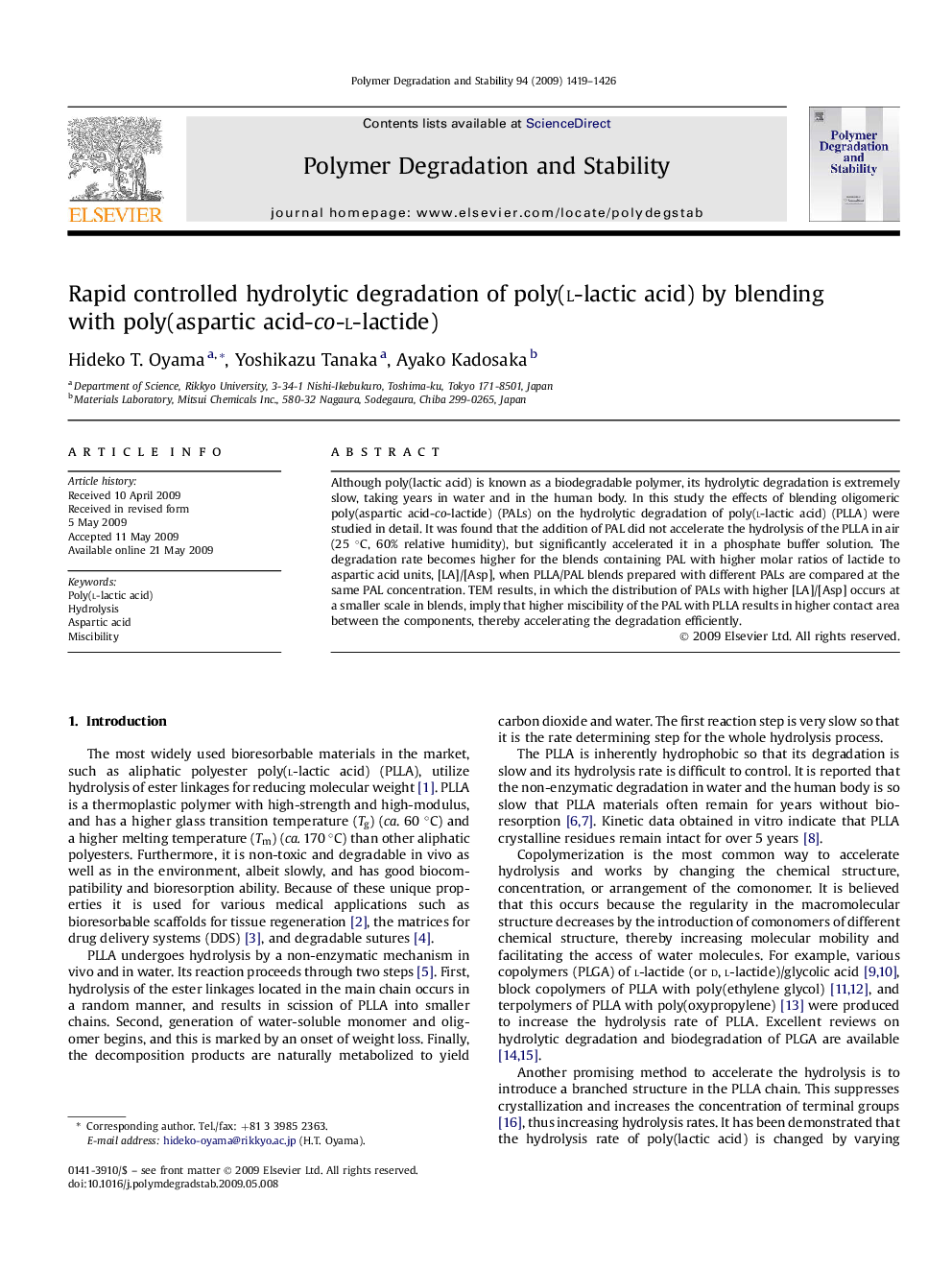| Article ID | Journal | Published Year | Pages | File Type |
|---|---|---|---|---|
| 5203923 | Polymer Degradation and Stability | 2009 | 8 Pages |
Abstract
Although poly(lactic acid) is known as a biodegradable polymer, its hydrolytic degradation is extremely slow, taking years in water and in the human body. In this study the effects of blending oligomeric poly(aspartic acid-co-lactide) (PALs) on the hydrolytic degradation of poly(l-lactic acid) (PLLA) were studied in detail. It was found that the addition of PAL did not accelerate the hydrolysis of the PLLA in air (25 °C, 60% relative humidity), but significantly accelerated it in a phosphate buffer solution. The degradation rate becomes higher for the blends containing PAL with higher molar ratios of lactide to aspartic acid units, [LA]/[Asp], when PLLA/PAL blends prepared with different PALs are compared at the same PAL concentration. TEM results, in which the distribution of PALs with higher [LA]/[Asp] occurs at a smaller scale in blends, imply that higher miscibility of the PAL with PLLA results in higher contact area between the components, thereby accelerating the degradation efficiently.
Related Topics
Physical Sciences and Engineering
Chemistry
Organic Chemistry
Authors
Hideko T. Oyama, Yoshikazu Tanaka, Ayako Kadosaka,
